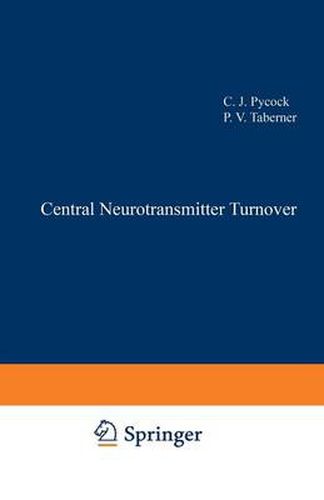Readings Newsletter
Become a Readings Member to make your shopping experience even easier.
Sign in or sign up for free!
You’re not far away from qualifying for FREE standard shipping within Australia
You’ve qualified for FREE standard shipping within Australia
The cart is loading…






This title is printed to order. This book may have been self-published. If so, we cannot guarantee the quality of the content. In the main most books will have gone through the editing process however some may not. We therefore suggest that you be aware of this before ordering this book. If in doubt check either the author or publisher’s details as we are unable to accept any returns unless they are faulty. Please contact us if you have any questions.
The concept of chemical transmission in the central nervous system has taken some time to be generally accepted, but an increasing number of compounds are now being recognized as hav ing a transmitter role in the brain. The acetylcholine system was the first to be discovered in the periphery and its charac teristic features of storage of transmitter in vesicles in the nerve terminal, its electrically-evoked release and rapid extra neuronal breakdown were considered to be necessary criteria for any neurotransmitter candidate. The subsequent elucidation of the noradrenergic system made it apparent that rapid enzymatic breakdown was not essential for a released transmitter, and the possibility of high-affinity re-uptake processes became establ ished as an alternative means of terminating the synaptic actions of a transmitter. With the eventual acceptance of the amino acids as excitat ory or inhibitory transmitters, the requirement for a transmit ter to be present in a low concentration overall (although locally concentrated in specific terminals) also had to be discarded. This necessitated the additional concept of specif ic metabolic pools with different functions being located in different cells or within different regions of the same cell. Some localization of glutamate and aspartate remote from excit able membranes is clearly essential since their overall brain concentrations would be sufficient to maximally depolarize the majority of neurones in the brain. The concept of separate metabolic pools has been supported by stUdies on turnover rate (see Chapter 5).
$9.00 standard shipping within Australia
FREE standard shipping within Australia for orders over $100.00
Express & International shipping calculated at checkout
This title is printed to order. This book may have been self-published. If so, we cannot guarantee the quality of the content. In the main most books will have gone through the editing process however some may not. We therefore suggest that you be aware of this before ordering this book. If in doubt check either the author or publisher’s details as we are unable to accept any returns unless they are faulty. Please contact us if you have any questions.
The concept of chemical transmission in the central nervous system has taken some time to be generally accepted, but an increasing number of compounds are now being recognized as hav ing a transmitter role in the brain. The acetylcholine system was the first to be discovered in the periphery and its charac teristic features of storage of transmitter in vesicles in the nerve terminal, its electrically-evoked release and rapid extra neuronal breakdown were considered to be necessary criteria for any neurotransmitter candidate. The subsequent elucidation of the noradrenergic system made it apparent that rapid enzymatic breakdown was not essential for a released transmitter, and the possibility of high-affinity re-uptake processes became establ ished as an alternative means of terminating the synaptic actions of a transmitter. With the eventual acceptance of the amino acids as excitat ory or inhibitory transmitters, the requirement for a transmit ter to be present in a low concentration overall (although locally concentrated in specific terminals) also had to be discarded. This necessitated the additional concept of specif ic metabolic pools with different functions being located in different cells or within different regions of the same cell. Some localization of glutamate and aspartate remote from excit able membranes is clearly essential since their overall brain concentrations would be sufficient to maximally depolarize the majority of neurones in the brain. The concept of separate metabolic pools has been supported by stUdies on turnover rate (see Chapter 5).